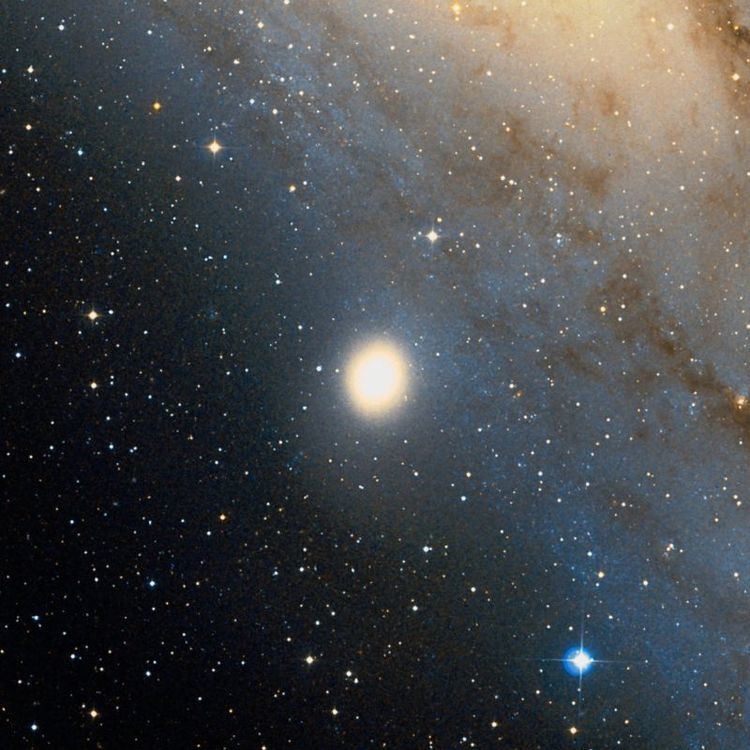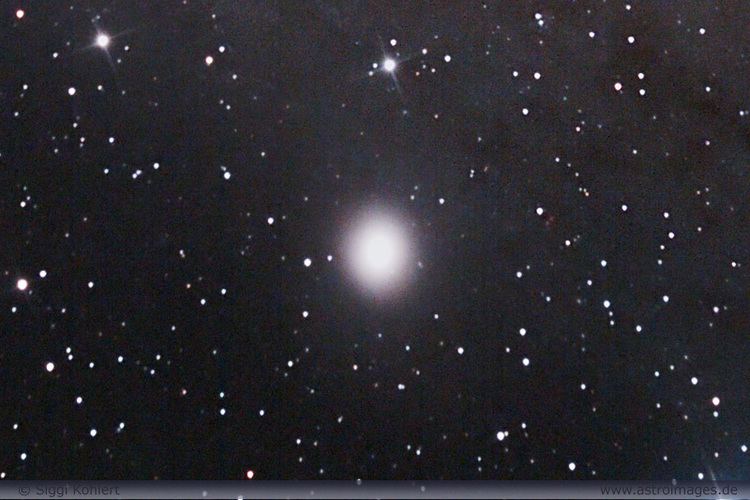Right ascension 00 42 41.8 Redshift -200 ± 6 km/s Type cE2 Magnitude 8.1 | Declination +40° 51′ 55″ Apparent magnitude (V) 8.08 Apparent mass ~3 billion M☉ | |
 | ||
Distance 2.49 ± 0.08 million light-years (763 ± 24 kpc) Similar Messier 34, Messier 28, Messier 25, Triangulum Galaxy, Messier 29 | ||
Messier 32 (also known as NGC 221) is a dwarf elliptical galaxy located about 2.65 million light-years from Earth, appearing in the constellation Andromeda. M32 is a satellite galaxy of the Andromeda Galaxy (M31) and was discovered by Le Gentil in 1749. M32 measures 6.5 ± 0.2 thousand light-years in diameter at the widest point. Like most elliptical galaxies, M32 contains mostly older faint red and yellow stars with practically no dust or gas and consequently no current star formation. It does, however, show hints of star formation in the relatively recent past.
Contents

The structure and stellar content of M32 is difficult to explain by traditional galaxy formation models. Some simulations suggest a scenario in which the strong tidal field of M31 can transform a spiral galaxy into a compact elliptical. As a small spiral galaxy falls into the central parts of M31, most of the outer layers of the smaller spiral are stripped away. The central bulge of the galaxy is much less affected and retains its morphology. Tidal effects trigger a massive star burst in the core, resulting in the high density of M32 observed today. There is also evidence that M32 has an outer disk.

Distance measurements

At least two techniques have been used to measure distances to M32. The infrared surface brightness fluctuations distance measurement technique estimates distances to spiral galaxies based on the graininess of the appearance of their bulges. The distance measured to M32 using this technique is 2.46 ± 0.09 million light-years (755 ± 28 kpc). However, M32 is close enough that the tip of the red giant branch (TRGB) method may be used to estimate its distance. The estimated distance to M32 using this technique is 2.51 ± 0.13 million light-years (770 ± 40 kpc).
Black hole

M32 contains a supermassive black hole. Its mass has been estimated to lie between 1.5 and 5 million solar masses.
